Олимпиада по английскому языку в 10 – 11 классах
2010-2011 уч. год
I. Reading
Text1
Read a newspaper article and for questions 1—7 circle the answer А, В, С or D which you think fits best
A Warm Reception Promised at the Ice Hotel
QUEBEC CITY Monday January 1 (Reuters). - Canadian businessmen opened on Monday North America's first Ice Hotel and said 1,000 tourists had already signed up to spend a night in a chilly building made of ice and snow.
The hotel built of 4,500 tons of snow and 25 tons of ice, opened outside Quebec City in a place overlooking the St. Lawrence river and the Montmorency Falls which are higher than world well known Niagara Falls. New Year's Day opening followed a weekend snowstorm.
"The hotel is fully booked with 22 people in our six suites," Ice Hotel communications director Helene Barbeau told Reuters. "The staff unveiled the hotel on New Year's Eve and even slept in the ice beds," she said in an interview.
The Ice Hotel's facilities include a bar, a cinema and two art galleries, with exhibits made of sculpted ice about Canada's Great North and Inuit people, as well as executive suites complete with an ice bed. The cost — $100 per one person a night — includes a hot breakfast and a sleeping bag on top of animal fur for the ice bed.
The Canadian structure cost C$750,000 to build, including C$125,000 from the Quebec provincial government.
Most of the 1,000 people who have reserved rooms for the season are Americans who come from as far away as Texas, Florida, California and Arkansas, but some also are tourists from South Africa, Japan, France, Germany and Britain. Those who reserved for Monday's opening came from New York, Maine, Washington and Montreal.
"We also expect 40,000 people to visit the site this winter," Barbeau said adding that the wedding of a local celebrity is to be held at the hotel on January 27.
The Ice Hotel will stay open for three months before the ice and snow melt in early April.
The idea of an ice hotel is being imported from Sweden, where what was advertised as the world's first ice hotel was built about ten years ago in Jukkasjarvi, a drive of seven hours from Stockholm.
The Quebec Ice Hotel (www.icehotel-canada.com) has a surface of 10,760 square feet, one quarter the size of its Swedish counterpart. It has a staff of 32 people.
The Ice Hotel intends to move permanently to the Duchesnay resort west of Quebec City next year. The new Ice Hotel should be able to accommodate 85 guests. It also will be the size of two football fields, four times larger than the current Ice Hotel and comparable in size to its Swedish counterpart.
"People will be able to do cross-country skiing, snowmobile riding and winter fishing," Barbeau said.
1. .The first ice hotel in the world was built not far from…
A. Stockholm.
В Montreal.
С Quebec.
D Duchesnay resort.
2. .The hotel opened
A before the snowstorm.
С at the weekend.
В after the snowstorm.
D before the weekend.
3. The Quebec provincial Government contributed into
this structure
A C$750,000.
В C$1,000.
С C$125,000.
D C$40,000.
4. The Ice Hotel is situated in the place which is
known for
A the wedding of a local celebrity.
В Winter Carnival.
С Niagara Falls.
D Canada's Great North
.
5. The new Ice Hotel will be
A the size of the present Ice Hotel.
В smaller than the present Ice Hotel.
С as large as a football field.
D larger than the present Ice Hotel.
Reading
Text2
You are going to read a magazine article about Barbara Cartland, a popular English writer. Choose from the statements 1—9 those which best summarises each part A—I of the article. There is one extra statement which you do not need to use.
She is one of the best-selling authors, even more popular than one well-known crime writer.
Cartland and her secretaries worked hard in her home
When she died she was two months away from her 99th birthday.
She was popular not only as a writer, she was also popular as an attractive woman and a lot of men proposed her.
She had an unfavourable opinion of journalists' and reporters' work.
Known as the Queen of Romance Cartland wrote not only love stories.
Her work was appreciated not only by ordinary people, she was given a British title of honour.
She was active in many other spheres of life.
Cartland was never far from the public eye.
Queen of Romance
A. Barbara Cartland became the world's best-selling author composing her romantic tales. Happy endings were a must for the Queen of Romance. Each title sold about a million of copies and there was a new title every two weeks. "For20 years, I've done a book a fortnight. Without fail, 600 words a day. Nobody else has done that," she once said.
В Cartland was born one of three children in Birmingham on July 9, 1901, in an upper-class but very poor family. Her father died in World War I. She published her first novel, Jigsaw, in 1923. The glamorous young novelist received marriage proposals from 49 men before she married a man of one of Britain's noble families in 1927. It was not a fairytale match and they divorced after six years. In 1936 she married Hugh McCorquo-dale, by whom she had two sons. Her husband died in 1963.
С Her 723 works — from A Kiss for the King to Paradise in Penang— sold more than one million copies each in 36 languages, topping even crime writer Agatha Christie. Cartland's readers from every social level buy her books from Thailand to Eastern Europe. She said: "The reason I'm such a big seller is that the world is short of beauty."
D She described her Victorian mansion on 500 acres (200 hectares) north of London as a "factory" with half a dozen secretaries to whom she dictated her Books, and "the largest Xerox money can buy." "I work very hard and when I need a plot I say to God, give me a plot, and he sends me one in 24 ' hours," she said.
E In addition to romantic novels, Cartland wrote a number of biographies of European royal persons, sociological volumes, autobiographies and health guides promoting the use of vitamins as the route to health: At 77 she recorded an album of love songs.
F She also turned her talents to politics, becoming a councillor for the right-wing Conservative Party. She campaigned on behalf of gypsies and nurses, lectured on the danger of feminism and organised exhibitions.
G A keen supporter of the royal family, she blamed the media for poor publicity and said Britain without them would become "a rather boring little island with a flag". In her book "The History of Barbara Cartland and How I Want to Be Remembered", she counteracted bad publicity about her daughter Raine, stepmother of Britain's Princess Diana.

 H In her last years she was an unforgettable figure. She usually appeared in public wearing a mass of pink chiffon and heavily made-up. She lived a full and fulfilling life, which touched many people around the world. Women admired her, she was a feminist icon. She received so many letters from all over the world and she often gave answers to them: she wanted to give the world what it needs — more love and beauty.
H In her last years she was an unforgettable figure. She usually appeared in public wearing a mass of pink chiffon and heavily made-up. She lived a full and fulfilling life, which touched many people around the world. Women admired her, she was a feminist icon. She received so many letters from all over the world and she often gave answers to them: she wanted to give the world what it needs — more love and beauty.
I In 1991 she became a Dame of the Order of the British Empire for her contribution to literature and her work for humanitarian and charitable courses. When she died in 2000, her friend said, "She was a character who was larger than life and a legend in her own time."
Reading
Text3
Read questions 1—6. Find the answers in the texts А—К from the Oxford Advanced Learner's Dictionary and put the correct letter in the box. There are some extra texts which you do not need to use.
1. This wild animal kills other small animals.
2. Women and children wear this type of hat tying it
with strings under the chin.
This is a fruit tree with fruits eaten as nuts.
This is a green plant with feathery leaves and no flowers.
This hat with a wide brim is worn especially by American cowboys.
This is a vegetable with green leaves which tastes a little like onion.
A. almond — a tree, native to Asia and Northern Africa and having alternate simple leaves, pink flowers and leathery fruits with a nut inside.
В. badger — an animal which has black and white fur, lives in holes in the ground and is active at night.
С. kernel — the edible part inside the outer shell of a nut.
D. bonnet — a hat of cloth or straw (often with a wide brim), held in place by ribbons tied under the chin and worn by babies and women (especially in the past).
E. barley— a valuable grain, of the family of grass, used for food.
F. fern — any of numerous flowerless and seedless plants reproducing by spores.
G. ferret— a small fierce European animal with pointed nose, which catches rats and rabbits.
H. fez — a round red hat with flat top and no brim, worn chiefly in the eastern Mediterranean.
I. heather— a low plant with small purple, pink, or white flowers which grows on the hills.
J. leek— an edible plant related to the onion having a white slender bulb and a flat dark green leaves.
К. stetson — a tall hat with a wide brim standing out round the head worn especially in the American West.
Listening
TEXT 1
You will hear a telephone conversation between a clerk to a repair shop and a client. For questions 1—5 complete the missing information..
Name of gadget (1)
Problem (2)
Reason for urgent repair (3)
Caller's phone number (4)
Caller's address (5)
Listening
TEXT 2
You will hear a conversation between two people who are interested in cars. For questions 1—8 decide whether each statement is True or False. In the box write T if the statement is true and F if it is false. You will hear the recording twice.
1.Alec Issigonis wanted to design a car that could win the Monte Carlo Rally. □
2. The Mini was the first family car. □
3. Now a lot of small cars are based on the design of the Mini. □
4. Everyone expected the Mini to become a fashionable car. □
5. The Mini took part only in three Monte Carlo Rallies. □
6. There are not any problems with this car at all. □
7. This car is still being produced in the UK. □
8. Amanda has had her car for 5 years and she'd prefer to have some other car. □
Listening
TEXT 3
You will hear a radio programme about the theatre In Elizabethan and Shakespearean age. For questions 1—7 choose and circle the best answer: А, В or С. You will hear this programme twice.
1. What were theatres in Elizabethan age like?
A They all were like our modern theatres.
В Some were like our theatres.
С They didn't have any features of modern theatres.
2. Was the style of plays the same in different theatres?
A No. Words were more important in the new theatre.
В No. Action was more important in the new theatre.
С No. Words were more important in the old theatre.
3. What kind of people went to the theatre at that time?
A Servants and working people of all classes visited
theatres.
В Only upper-class people visited theatreю
С People of different social classes visited theatre.
4. How much were theatre tickets?
round the stage.
A in the open air theater it cost 6 pence to stand round the stage
В The entrance fee in the new indoor theatres was 12
pence.
С In the open-air theatre it cost 6 pence to sit in a
box.
5. I know the audiences were badly behaved, weren't they?
A Yes, and actors complained most about cracking nuts during the performance.
В Yes, and actors complained most about eating during the performance.
С Yes, and actors complained most about talking during the performance.
6. Everyone knows that female parts were played by boy
actors, weren't they?
A Yes, boy actors had played men's parts until their
voices broke.
В Yes, boy actors had played women's parts until
their voices broke.
С Yes, some of them played men's parts until their
late twentieth.
7. Were theatres in Elizabethan age more popular than they are now?
A No, only 20—25 % of the population attended theatre in Elizabethan age.
В Yes, only 20-25% of the population go to the theatre today.
С Yes, 20—25 % of the population attended theatre in Elizabethan age.
Use of English
Complete these sentences by using the correct word from the box. Use each word once only. There is an extra word that you do not need to use.
council rubbish paint structure
project computer microchip service
Garbage Collection Goes High Tech
The city of Barcelona is putting microchips in its 18,000 (0) litter bins to try and make garbage collection easier. By installing microchips in the structure of the bin Barce-
lona's collectors with a hand-held computer (1)
can read how full a bin is, the last time it was emptied,
and if it needs a lick of . "As far as I know (2)
this is the first project of this kind in Spain if not in the
world," said a spokesman for the Barcelona city (3)
about the & 113,000 . "The aim of the special- (4)
ly designed software is to optimise cleaning (5)
and litter collection routes," he said.
Use of English
II.
Read the following text and look carefully at each numbered line. Some of the lines are correct, and some have a word which should not be there. If a line is correct, put a tick {•/) after it. If a line has a word which should not be there, write down this word.

![]() Penguins Intrigue Scientists
Penguins Intrigue Scientists
Do penguins fall over backwards when watching aircraft fly overhead? British scientists
are travelling to South Georgia in the south Atlantic to find answers to that ques-
tion and an others from a study of the island's (1)
4000,000 King Penguins. Scientists have been
sceptical about reports of penguins falling over (2)
backwards to watch aircraft flying above
them. But a senior officer on the British navy
ship HMS Endurance which is taking the sci-
entitle team to South Georgia, said he be
lieved the reports. "The penguins always
look up the helicopters and follow for them (3)
all the way until they fall over backwards,"
Stuart Matthew, the ship's operations offic
er, told to the Daily Telegraph. Dr Richard (4)
Stone of the British Antarctic Survey told Re
uters that scientists were concerned that low-
flying aircraft could to cause stress among pen- (5)
guins and affect their breeding performance.
Use of English
III.
Read the passage below and use the appropriate form of each verb in brackets in the numbered blanks.
Прочитайте отрывок и напишите соответствующую форму каждого глагола, данного в скобках, в отведенном для этого месте.
Mr. Dunning (be)a very clever man. ------------------(1)
...One evening, later in the same week, Mr.
Edward Dunning (return) from the British (2)
Museum Library, where he ( work) all day, ___________ (3)
to his comfortable home. He ( live) alone (4)
there except for the two women who (cook)and ____________(5)
cleaned for him. A train ( take) him most of (6)
the way home, then he a bus for the last mile
or two. He ( finish) reading his newspaper (7)
by the time he (get) on the bus so he amused (8)
himself by reading different notices on the win-
dows opposite him. He already ( know) most (9)
of them quite well, but there seemed to' be a
new one in the corner that he (not see) be- (10)
fore. It was yellow with blue letters, and all he
could (read) was the name 'John Harrington'. (11)
Soon the bus (be) nearly empty and he ( change) (12)______ (13)
his seat so that he could read the rest of it. Mr. Dunning stared at this notice for a long time. He was the only passenger on the bus when it
reached his stop, and as he ( get) off he said to (14)
the driver, T just ( read) that new notice on (15)
the window. It's strange, isn't it?'
Writing
Not long ago you moved house. You live in a new house now, in a new district of your town. In a letter to your English-speaking pen friend describe your new flat and the place where you live now. Say what you like or dislike.
Describe the following:
why you moved house;
compare it with your former flat;
when you moved house;
write about the district you live now;
describe your flat, its conveniences;
compare it with the district where you lived before;
write whether you are happy or not and why.
Write 100—140 words. Be polite and remember the rules of letter writing.
Keys
Listening
Text 1 Clerk: Leisure and Pleasure General Stores. Can I help you?
Woman: Good afternoon. There is something wrong with my
washing machine. Could you arrange to repair it?
Clerk: How long have you had it?
Woman: 1 bought it two years ago.
Clerk: What is the problem?
Woman: Nothing happens when I switch it on.
Clerk: Just a moment. Our engineer is free on Friday morning.
Woman: Could you manage something sooner? I've got 5 children.
Clerk: Well, I'll put it down as an urgent repair.
Woman: Thank you, thank you very much.
Clerk: What's your name and phone number?
Woman: Kate Evance, 77 33 05.
Clerk: And your address?
Woman: 45 Green Street. Thanks for your help. Good-bye.
Clerk: Good-bye.
washing machine
Nothing happens when the woman switches it on.
She has 5 chidren.
77 33 05
45 Green Street
Text2
Michael: Amanda, how long have you had this car?
Amanda: For 5 years. It's one of the latest models.
M: The Mini is a nice car. I know it has a long history...
A: Yes, it does. The Mini was designed by Alec Issigonis in 1959. He wanted to design a family car, which was smaller than other family cars, but which had more space inside. In 1959 this design was revolutionary. Today nearly each small car is based on the Mini.
M: And I know it was a very fashionable car at that time.
A: Quite so. Everybody was very surprised. Many film and pop stars, politicians, royalty drove Minis. Even Enzo Ferrari, famous Italian sport car designer, owned one.
M: By the way, I know tb? Mini took part in rallies.
A: Right. Minis took part in all the major European rallies from 1960. For example, they won three Monte Carlo Rallies in 1964, 1965 and 1967.
M: Nowadays there are so many faster and more elegant cars. Why do you drive the Mini?
A: I can't think of any other cars. The Mini is very easy to drive around the town, easy to park, really. And it's so economical, and it's so well designed...
M: Is there anything you don't like? A: They are not very good when it's damp. When it's wet they are a bit difficult to start.
1F 2F 3T 4F 5F 6F 7T 8F
Text 3
Radio announcer (RA): Welcome to our Sunday programme "Stories of Britain". Today our guest is Ron Johnson, philologist. Ron is here to talk about theatres in Elizabethan age, the 16th century.
Ron: Hello, listeners. RA: What were theatres in the 16th century like?
Ron: Many people think there were only open air theatres in the 16th century. At the beginning— they were. Later, some 16th century theatres had the features of modern theatres: they were covered over, so performances could be staged in bad weather; they were lighted by candles, so the performances could be staged in the evening, music and scenery were introduced. RA: Was the style of plays the same in different theatres?
Ron: There were considerable differences. The older theatres showed more physical actions, the new indoor theatres concentrated more on wit and cleverness of words. Noisy effects were scaled down such as drumming, fireworks... Songs and music were much more features of the newer theatres. Intervals between acts were introduced, whereas the open air theatres tended to play without a break. RA: What kind of people went to the theatre at that time?
Ron: We know that a social spectrum of people visited the theatre. Audiences included the richest and the poorest. They were such people as landed gentry, doctors, lawyers, gentlemen, servants and working people of all classes. In other words, there was a much more varied audience than for most of our theatres today. RA: How much were theatre tickets?
Ron: In the open air theatres prices varied from one penny to stand round the stage, to sixpence for a box. The indoor theatres were more expensive: the standard entrance fee was sixpence and a stool on the stage itself cost another sixpence. RA: I know audiences were not well behaved, were they?
Ron: You mean modern audiences are well behaved? Well. The audience commonly talked throughout the performances; they might well applaud, but they booed and hissed as well if the actors disappointed them. Food and drinks were served during the performance. One of the things actors complained most about was the cracking of nuts which caused a lot of noise. The power of the actor would be shown by his ability to command the attention of the audience.
RA: Everyone knows that female parts were played by boy actors, weren't they? Ron: Yes, they were. In Elizabethan time girls and women were not allowed to act on the stage. There were companies of boy actors, who were taken from choir schools and trained as actors. While they were young and their voices hadn't broken, they played female parts, between the age of 10 and 13. Some of them continued to play women's parts until their late teens or early twentieth.
RA: Were theatres popular in Elizabethan age? Ron: Yes. It has been estimated that about 20-25 per cent of the popular on attended the playhouses, which again is a far higher percentage than today.
RA: Thank you, Ron. I'll see you...
1B 2A 3C 4C 5A 6B 7C
Reading
Text1
(1 -A,2-B,3-C,4-A,5-D)
Text2
1С, 2D, 3-, 4В, 5G, 6Е, 71, 8F, 9Н
Text3
1G 2D ЗА 4F 5К 6J
Use of English
I. 1- rubbish, 2-paint,3- council,4-project,5-service
II. 1-an,2-v,3-for,4-to,5-to
III. 1 was, 2- was returning,3-had worked,4-lived,5-cooked,6-took, 7-had finished,8got,9-knew.10-had not seen,11- read,12-was.13- changed,14-was getting off,15-have read

 Получите свидетельство
Получите свидетельство Вход
Вход




 H In her last years she was an unforgettable figure. She usually appeared in public wearing a mass of pink chiffon and heavily made-up. She lived a full and fulfilling life, which touched many people around the world. Women admired her, she was a feminist icon. She received so many letters from all over the world and she often gave answers to them: she wanted to give the world what it needs — more love and beauty.
H In her last years she was an unforgettable figure. She usually appeared in public wearing a mass of pink chiffon and heavily made-up. She lived a full and fulfilling life, which touched many people around the world. Women admired her, she was a feminist icon. She received so many letters from all over the world and she often gave answers to them: she wanted to give the world what it needs — more love and beauty.

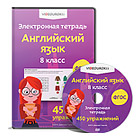

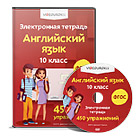
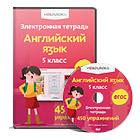
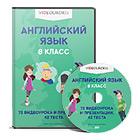

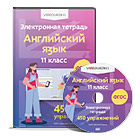
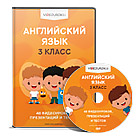
 Олимпиада по английскому языку (9-11 класс) (0.1 MB)
Олимпиада по английскому языку (9-11 класс) (0.1 MB)
 0
0 4003
4003 1332
1332 Нравится
0
Нравится
0


